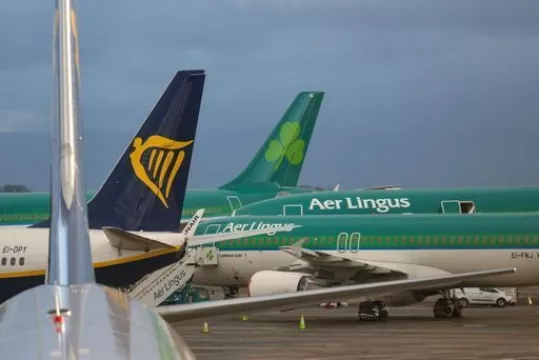Despite continued uncertainty over foreign travel, spending on airlines has increased by 132 per cent since May according to an AIB report.
Consumer spending rose in sectors that were previously closed as a result of the Covid-19 restrictions according to the latest AIB Spend Trend report.
Spending in clothing stores (+50 per cent), homeware stores (+30 per cent) and health & beauty stores (+14 per cent) including hairdressers all saw double digit increases in May as restrictions started to lift. Meanwhile, e-commerce spending was down three per cent as consumers chose to spend in-store rather than online.
The Government’s May guidance on the proposed easing of hospitality and travel restrictions also resulted in big increases in spending on airlines (+132 per cent), hotels (+67 per cent) and restaurants (+10 per cent), as consumers had more clarity and booked ahead of the lifting of restrictions. Spending in stores that remained open throughout the pandemic such as electronics (-four per cent), hardware (-two per cent) and groceries (-two per cent) decreased as consumers shopped elsewhere.
In Store Spend
While e-commerce was down, physical card payments were up, with digital wallet payments up 18 per cent, contactless up nine per cent and chip and pin up 12 per cent, indicating that more consumers were out and about spending.
In-store spending on clothing was up 1,443 per cent on April, however it was down 17 per cent online. Similarly, in-store spending in electronic stores was up seven per cent, however down nine per cent online. Sales in in-store health and beauty stores was up 20 per cent, however down three per cent online and in-store spending in homeware stores was up 107 per cent, however down 16 per cent online.
Overall, consumer spending during the month of May was up six per cent on April, however transaction levels are still down on pre-pandemic levels.
Data was compiled from AIB Debit and Credit card spending from over seven million transactions between May 1st and 31st. To account for the difference in the number of days in each month the AIB Spend Trend looks at average daily spend instead of total monthly spend, providing an accurate reflection of consumer spending habits.
Regional Spend
Carlow consumers recorded the biggest increase in spending on clothes, up 67 per cent on April, meanwhile those from Longford recorded the biggest increase in spending on homewares. Those from Longford also recorded the biggest increase in restaurant spending, up 18 per cent.
Offaly consumers recorded a 100 per cent increase in hotel spend in May, the largest increase of any county. Those from Kerry only recorded a 33 per cent increase in hotel spending, the lowest increase of any county.
Demographics
Dublin recorded the highest increase in spending during May, up seven per cent on April, followed closely by Kildare, Cork, Cavan, Sligo and Galway — all recording a six per cent increase in spending. Carlow and Donegal recorded the lowest increase in spending, up two per cent on April.
Those under the age of 25 (+nin per cent) recorded the biggest increase in spending followed by those over the age of 65 (six per cent).
Rachel Naughton, Head of SME Banking at AIB said: “After months of restrictions resulting in businesses being closed it’s encouraging to see these impacted sectors record double digit increases in spending, releasing some of the pent up demand which has been evident through the pandemic.
“It’s also interesting to see the switch away from e-commerce during May, which is down three per cent, as many businesses reopened and consumers choosing to spend their money in store rather than online. Over the coming months we will need to support these industries where possible to ensure the months of lost trading can be recouped and they can start to return to pre-pandemic trading levels.”







